Cloud-based solutions are becoming the technology of choice for a wide range of contact centre operators. In particular, cloud appeals to those organisations that require flexibility and scalability to cope with seasonal changes in demand, the expansion of services or the virtualization of contact centre operations.
As we’ve seen in previous articles, an increasing number of businesses are turning to cloud when their legacy solutions go end-of-life. If you are contemplating a move to the cloud, how should you go about evaluating service vendors? What are the key points of reference you should look for?
Before you start researching potential vendors, it’s important to clearly define what your target environment will look like. Make sure you have engaged with stakeholders for business processes that will be impacted by the change (contact centre, IT, back-office, sales etc.) and know what you want to move to the cloud and what needs to stay on-prem.
First things first. Not all cloud solutions are the same. In fact, when you dig a little deeper, you’ll find that not all cloud solutions are cloud at all. What some providers refer to as a cloud solution is actually a hosted service. These are not the same thing.
The best advocate for cloud communications will be a business that is already using it. When looking at potential vendors, ask for reference sites that closely match your requirements. Don’t settle for a flagship client reference if it doesn’t meet your criteria; look for evidence that the vendor has experience of working with “people like you”.
It goes without saying that any potential vendor will need to provide the features and functionality you require. If you’re building your ideal cloud solution, you shouldn’t have to start by compromising on functionality, scalability, compliance or resilience.
Look for a provider with proven integration experience. Rarely will two cloud deployments be the same, so integration expertise needs to extend beyond the usual suspects. If you have legacy systems in place that you would like to preserve, make sure they know it.
Technology roadmap is another important reference point. If you’re looking for a long-term partnership, make sure the service provider is capable of supporting your requirements both for today and for years to come. Look into the vendor’s financial position. It will give you an indication as to whether quality of service and innovation can be sustained in the long-run.
Service Level Agreements can be a used as a benchmark for a more pragmatic assessment of suppliers. Amongst the SLA criteria, there are three key metrics to look out for:
Any digital enterprise needs uninterrupted access to its business-critical data and applications. Anything less than five nines (99.999%) is just not good enough; this equates to five minutes of downtime a year. By comparison, four nines (99.99%) means you’re without service for 52 minutes a year.
It would be remiss of me not to point out at this juncture that Cirrus have maintained 100% availability for the past four years!
RTO is a measure of how quickly your service will be up and running in the event of a failure. If your cloud service provider is worth its salt, this should be less than a minute.
RPO is a measure of how much data you may have lost as a result of a failure – or, when your data and config were last backed up. If your service provider needs to move to a back-up system, you want to keep this loss of data to a minimum. In some cases, you may lose hours, or even days of data. Once again, the number you should be looking for is under a minute!
About Cirrus
If you are thinking about migrating some or all of your contact centre services to the cloud, get in touch with one of the Cirrus team. With more than a decade’s experience of delivering cloud communications we are experts in systems integration and offer unrivalled RTO and RPO.




